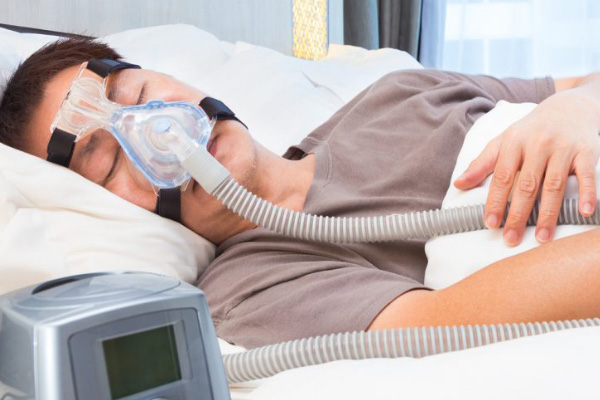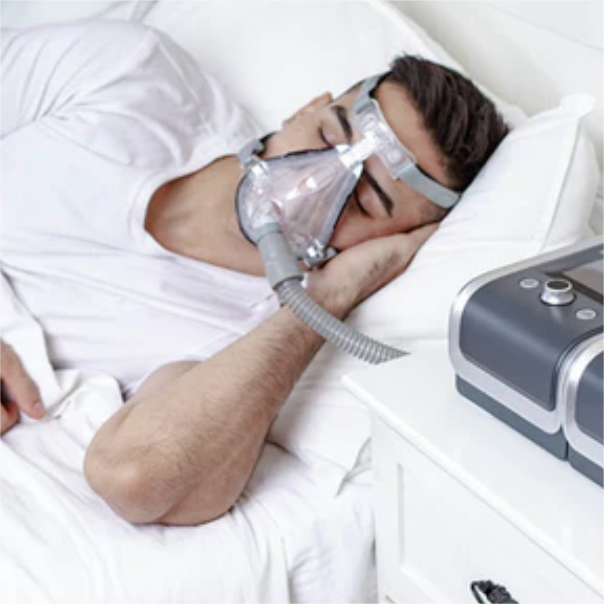BiPAP Rental: High-Quality Devices for Rest Apnea Alleviation
BiPAP Rental: High-Quality Devices for Rest Apnea Alleviation
Blog Article
Bipap vs. CPAP: Which Is the most effective for Your Sleep Disorder?
When navigating the intricacies of sleep problems, the option between BiPAP and CPAP treatment is an essential consideration. While CPAP provides a constant air flow suitable for obstructive rest apnea, BiPAP's dual stress settings might enhance convenience for those with more complex respiratory issues.
Recognizing Sleep Disorders
Rest disorders incorporate a series of problems that disrupt typical sleep patterns, impacting both the quality and period of remainder. These disorders can show up in various kinds, including insomnia, sleep apnea, narcolepsy, troubled leg disorder, and parasomnias. Each problem provides one-of-a-kind difficulties, commonly resulting in substantial daytime tiredness, cognitive impairment, and psychological disturbances.
Sleep problems is defined by trouble falling or staying asleep, while sleep apnea involves repeated disturbances in breathing throughout rest, often causing fragmented remainder. Narcolepsy, on the other hand, is noted by excessive daytime sleepiness and unexpected rest strikes. Troubled leg syndrome causes unpleasant feelings in the legs, triggering an irrepressible urge to move them, which can also hinder the capability to drop off to sleep.
The effect of rest problems expands past specific health, influencing general efficiency, partnerships, and top quality of life. Understanding the particular nature of each problem is important for reliable medical diagnosis and therapy. As sleep health and wellness comes to be significantly recognized as a crucial component of total wellness, dealing with these problems is important for enhancing both sleep quality and day-to-day performance.
Exactly How CPAP Works
Constant Favorable Respiratory Tract Stress (CPAP) treatment is frequently used as a main treatment for obstructive rest apnea (OSA) The mechanism of CPAP involves the use of an equipment that supplies a steady stream of air via a mask used during rest. This airflow keeps favorable stress in the airway, preventing the collapse or obstruction of the throat that can occur during rest.
When an individual breathes in, the CPAP equipment gives a constant flow of air, making certain that the airway stays open - BiPAP Rental. This not only reduces the signs and symptoms of OSA, such as snoring and interrupted sleep patterns, but additionally lowers the affiliated health and wellness threats, consisting of cardio complications and daytime exhaustion
The pressure settings on a CPAP machine can be personalized to meet individual person needs, frequently figured out with a rest research study. In general, CPAP treatment has been revealed to substantially enhance the quality of sleep and total wellness for people experiencing from obstructive rest apnea.
Just How BiPAP Functions
BiPAP, or Bilevel Positive Respiratory Tract Pressure, is a specialized kind of non-invasive ventilation that is particularly beneficial for people with problems such as intricate rest apnea or breathing disorders. Unlike CPAP, which delivers a constant stream of air at a solitary pressure, BiPAP provides 2 unique pressure setups: a higher inspiratory stress for inhalation and a reduced expiratory stress for exhalation. This dual-pressure approach enables for less complicated breathing, decreasing the initiative needed during exhalation.
The device runs via a mask fitted over the nose or mouth, connected to a machine that produces air stress. When the client breathes in, the device supplies the greater stress to aid with airflow, making certain that the respiratory tract remains open. Upon exhalation, the machine immediately decreases the stress, making it a lot more comfortable for the patient to breathe out.

Key Distinctions Between BiPAP and CPAP

On the other hand, BiPAP (Bilevel Favorable Air passage Pressure) offers 2 different pressure setups: one for inhalation and a lower one for exhalation. This double stress system enables for even more comfy breathing, specifically for individuals that have problem with exhaling versus a continual pressure. BiPAP is frequently suggested for patients with complicated rest apnea, chronic obstructive pulmonary disease (COPD), or those that require added support throughout sleep.
In addition, the complexity of BiPAP tools typically causes a greater expense and calls for extra cautious titration than CPAP. BiPAP Rental. Comprehending these crucial differences can aid in acknowledging which gadget may be preferable for particular sleep conditions, establishing the groundwork for enlightened therapy decisions
Choosing the Right Treatment
Just how can one determine the most appropriate therapy for handling rest problems? The choice in between BiPAP and CPAP therapy primarily depends upon the certain features of the rest condition, the individual's general health, and their convenience with the gadget. CPAP, which supplies a constant stream of air, is great site commonly recommended for obstructive sleep apnea (OSA) It maintains an open respiratory tract during sleep, properly protecting against hypopneas and apneas.
On the other hand, BiPAP offers two levels of pressure: one for inhalation and a reduced one for exhalation. This double stress system is valuable for people with complicated sleep apnea or those who experience problem exhaling versus a continuous pressure. Additionally, BiPAP is commonly recommended for individuals with respiratory system conditions, such as persistent obstructive pulmonary condition (COPD), where differing webpage pressure setups can enhance comfort and compliance.
Eventually, a detailed examination by a sleep specialist, including a sleep study, can help establish which therapy straightens best with the client's demands. Variables such as comfort, ease of use, and certain medical problems ought to also be taken into account to enhance therapy results.
Final Thought
In summary, both BiPAP and CPAP serve distinct objectives in the management of rest disorders. CPAP is effective for obstructive sleep apnea via constant air movement, while BiPAP uses double stress settings that boost comfort for those with complex sleep apnea or breathing concerns. The choice in between these treatments must be assisted by individual needs and conditions, necessitating an extensive analysis by a rest expert to make certain optimal treatment outcomes and boosted top quality of rest.

Overall, CPAP therapy has actually been shown to substantially improve the quality of sleep and general wellness for people experiencing from obstructive rest apnea.
BiPAP is usually recommended for clients with complicated rest apnea, persistent obstructive lung disease (COPD), or those who call for additional assistance during sleep.
CPAP is efficient for obstructive rest apnea through constant air movement, while BiPAP provides twin pressure setups that enhance convenience for those with intricate sleep apnea or respiratory concerns.
Report this page